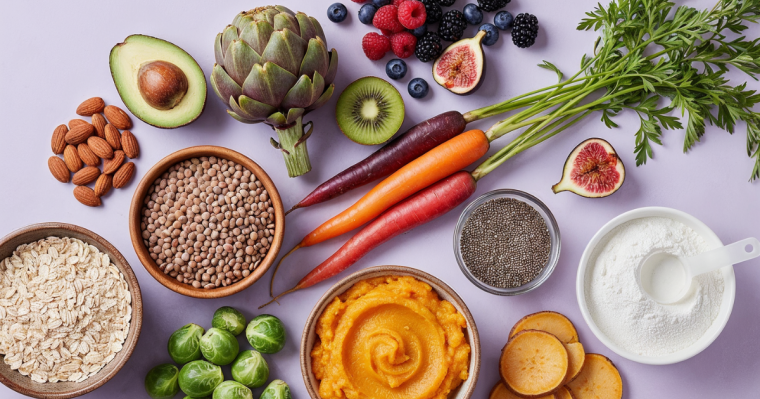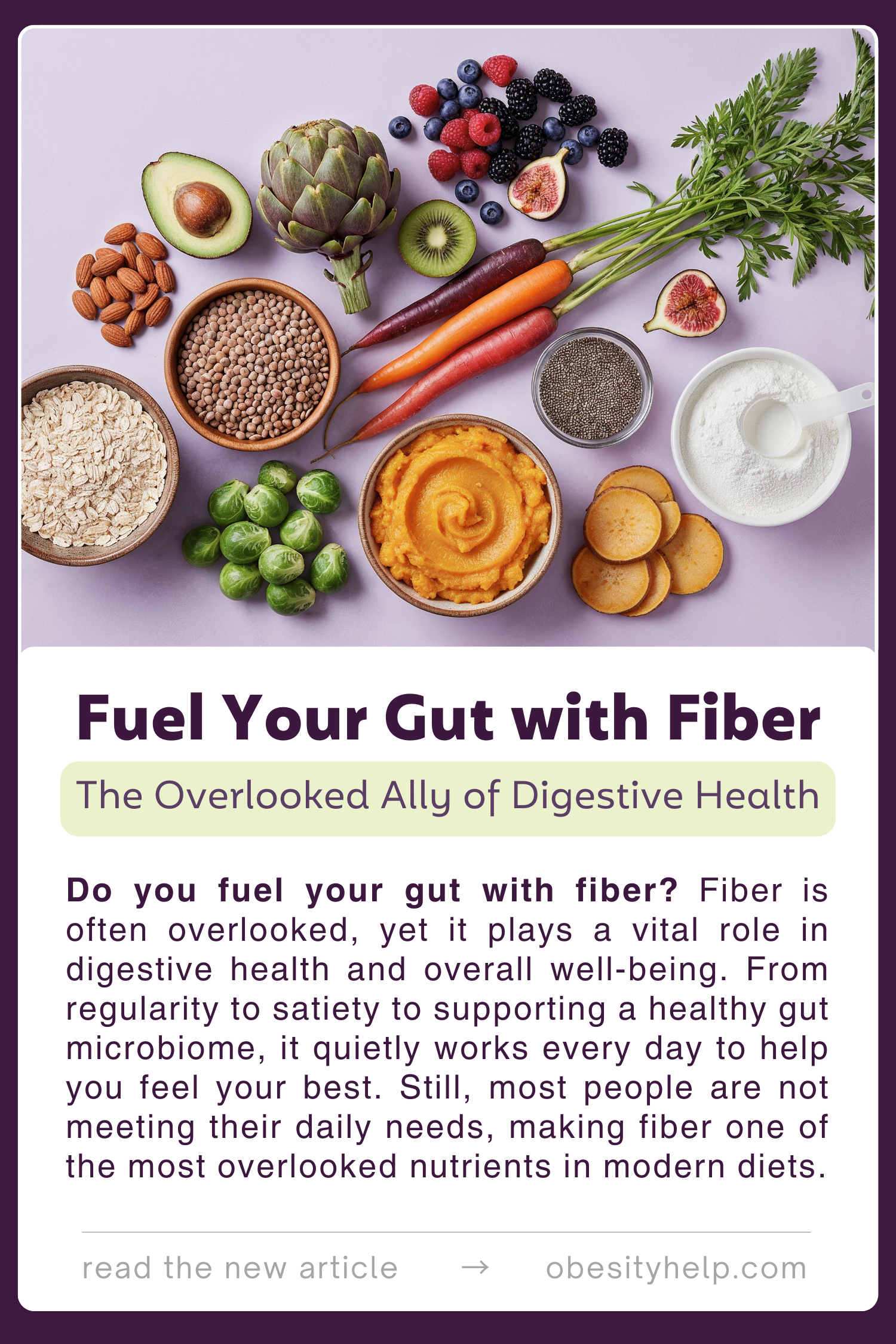
Fuel Your Gut with Fiber: The Overlooked Ally of Digestive Health
October 30, 2025Sponsored by Premier Protein®
Authored by Eric Klein, BS, MBA
Do you fuel your gut with fiber? Fiber is often overlooked, yet it plays a vital role in digestive health and overall well-being. From regularity to satiety to supporting a healthy gut microbiome, it quietly works every day to help you feel your best. Still, most people are not meeting their daily needs, making fiber one of the most overlooked nutrients in modern diets.
The Fiber Gap: A Widespread Nutrition Challenge
According to data from the National Health and Nutrition Examination Survey (NHANES), people in the United States consume an average of just 15 to 16 grams of fiber per day,[1] which is far below the recommended range of 25 to 38 grams.[2]
Part of the underconsumption of fiber is due to the shift in modern diets. According to the CDC, more than half of the calories consumed by Americans come from ultra-processed foods, which are typically low in fiber and contain little or no whole ingredients.[3] Busy lifestyles also make it easier to choose refined options over whole, fiber-rich foods. Over time, these small choices add up to a consistent shortfall in fiber intake.
Insufficient fiber intake can result in meals that don’t keep you full, reduced support for beneficial gut bacteria, and fewer of the everyday benefits that include supporting steady energy and digestive regularity.[4] The good news is that even small daily choices can help close the gap.
How Fiber Supports Digestive Health
Fiber takes a unique path. Unlike many nutrients, it is not broken down and absorbed in the small intestine. Instead, fiber moves through the digestive system mostly intact, shaping key processes along the way. As shared by the U.S. Centers for Disease Control and Prevention (CDC), there are two main types of dietary fiber, and each plays an important role:[5]
- Soluble fiber dissolves in water and forms a gel-like substance. It slows digestion, which helps you feel fuller longer and supports balanced blood sugar and cholesterol levels.
- Insoluble fiber does not dissolve in water. It adds bulk to stool and keeps food moving smoothly through the digestive system, supporting regularity and digestive comfort.
Fiber plays a variety of roles in supporting your overall health:
- Digestive Health: Fiber adds bulk to stool, supporting regularity and a healthy gut environment. Some fibers are also fermented by gut bacteria, producing short-chain fatty acids (SCFAs). These compounds, including butyrate, provide energy for the cells that line the colon and help keep the intestinal barrier strong.[6]
- Satiety and Energy Balance: Fiber helps you feel full and satisfied after meals. By slowing digestion, it supports appetite balance and steadier energy levels throughout the day.[7]
- Heart and Blood Sugar Health: Soluble fiber, found in foods like oats, beans, and apples, helps bind cholesterol in the digestive system and supports healthy cholesterol levels.[8] It also slows the absorption of sugar, supporting blood sugar regulation.[9]
Closing the Gap: Fiber Sources
Getting enough fiber is easier when you know where to find it. Here are some fiber-rich sources, their approximate fiber content, and how they help:
| FIBER SOURCE | EXAMPLE / QTY / FIBER (GRAMS) | HOW IT HELPS |
|---|---|---|
| Fruits | Raspberries (1 cup ~8 g) | High in insoluble fiber; adds bulk and supports regularity. |
| Vegetables | Artichoke (1 medium ~10 g) | One of the top vegetable sources; provides both fiber types. |
| Whole Grains | Barley, pearled (1 cup cooked ~6 g) | Rich in soluble fiber (beta-glucan); helps regulate cholesterol and blood sugar. |
| Legumes | Lentils (½ cup cooked ~8 g) | Dense in soluble fiber; supports satiety and healthy blood sugar response. |
| Nuts & Seeds | Chia seeds (2 Tbsp ~10 g) | Extremely high in soluble fiber; helps maintain fullness. |
| Fiber Supplements | Psyllium husk, inulin, soluble corn fiber (1 serving ~3–7 g) Formula-dependent | Concentrated soluble fibers that can support regularity, cholesterol health, and microbiome balance when whole-food intake is low. |
| Protein + Fiber Blends | Premier Protein® Whey Protein Powder Plus° Fiber (2 scoops ~7 g) Formula-dependent | Premier Protein® combines protein with partially hydrolyzed guar gum, soluble corn fiber, and acacia gum, prebiotics that support gut health and satiety. |
° 25% more of the Daily Value for Dietary Fiber than our original Whey Protein Powder
Closing the fiber gap does not require dramatic changes. Small, consistent steps add up.
- Choose whole fruits instead of juice
- Add beans or lentils to meals a few times a week
- Swap refined grains for whole-grain options
- Snack on nuts, seeds, or vegetables
- Use products that combine both protein and fiber
You can also try fiber-rich recipes. A great example is our Pumpkin Spice or Spicy Chocolate Protein Fiber Balls, which combine Premier Protein® Whey Protein Powder Plus Fiber with other fiber-rich ingredients like rolled oats and pumpkin puree.[10] Two scoops of the powder provide 25 grams of protein and 7 grams of prebiotic soluble fiber from a blend of partially hydrolyzed guar gum, soluble corn fiber, and acacia gum. Paired with the oats and pumpkin, the recipe delivers both soluble and insoluble fiber in a convenient, satisfying snack.
Final Thoughts: Fuel Your Gut, Fuel Your Health
Research consistently highlights the importance of fiber for digestive health, satiety, and balance. Both soluble and insoluble fibers work together to keep your system running smoothly and your energy steady. It is time to recognize fiber as a true ally of digestive health. Shifting to this mindset can inspire small, proactive choices that add up over time. When you care for and fuel your gut with fiber, you strengthen digestion, sustain energy, and promote lasting health.
Test your knowledge:
1. Which of the following best describes soluble fiber?
A) It adds bulk and speeds food through the digestive system
B) It dissolves in water and can help regulate cholesterol and blood sugar
C) It does not dissolve in water and supports digestive comfort
D) It is only found in animal-based foods
2. What role do prebiotic fibers play in the gut?
A) They block nutrient absorption
B) They act as food for beneficial bacteria
C) They eliminate harmful bacteria directly
D) They replace probiotics in supplements
References
1Hoy MK, Goldman JD. Fiber intake of the U.S. population: what we eat in America, NHANES 2009–2010. United States Department of Agriculture (USDA). 2014. https://www.ncbi.nlm.nih.gov/books/NBK589559/
2 Akbar A, Shreenath AP. High Fiber Diet. Stat Pearls Publishing. 2025. https://www.ncbi.nlm.nih.gov/books/NBK559033/
3 Centers for Disease Control and Prevention (CDC). Consumption of ultra-processed foods among persons aged 1 and over: United States, 2021–2023. NCHS Data Brief No. 536. 2024. https://www.cdc.gov/nchs/products/databriefs/db536.htm
4 Catanese, L. Foods high in fiber: boost your health with fiber-rich foods. Harvard Health Publishing. 2024. https://www.health.harvard.edu/nutrition/foods-high-in-fiber-boost-your-health-with-fiber-rich-foods
5 Centers for Disease Control and Prevention (CDC). Fiber: the carb that helps you manage diabetes. Centers for Disease Control and Prevention. 2023. https://www.cdc.gov/diabetes/healthy-eating/fiber-helps-diabetes.html
6 Fu J, Zheng Y, Gao Y, Xu W. Dietary fiber intake and gut microbiota in human health. Microorganisms. 2022;10(12):2507. doi:10.3390/microorganisms10122507. https://pmc.ncbi.nlm.nih.gov/articles/PMC9787832/
7 Clark MJ, Slavin JL. The effect of fiber on satiety and food intake: a systematic review. Nutr Rev. 2013;71(9):534–554. https://pubmed.ncbi.nlm.nih.gov/23885994/
8 Lattimer JM, Haub MD. Effects of dietary fiber and its components on metabolic health. Nutrients. 2010;2(12):1266–1289. doi:10.3390/nu2121266. https://pmc.ncbi.nlm.nih.gov/articles/PMC3257631/
9 Diabetes Food Hub team. Facts about fiber you should know. Diabetes Food Hub (American Diabetes Association). 2025 Jan 7. https://diabetesfoodhub.org/blog/facts-about-fiber-you-should-know
10 Klein EA. Pumpkin Spice or Spicy Chocolate? Protein Fiber Balls with Premier Protein®. ObesityHelp. 2025. https://www.obesityhelp.com/articles/spicy-chocolate-or-pumpkin-spice-protein-fiber-balls-premier-protein/
 | ABOUT THE AUTHOR Eric Klein, BS, MBA has authorship on a dozen academic peer review publications on the neurometabolism of addiction and behavior and has been involved with metabolic research and public education for over two decades. He is also the founder of ObesityHelp.com, the first online community dedicated to bariatric support and education. |




